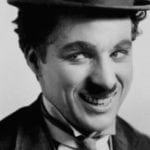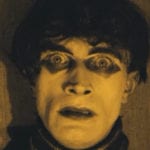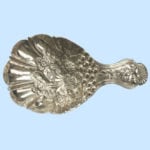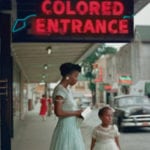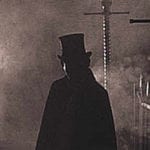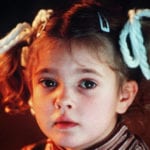 Facts
Facts  Facts
Facts  Movies and TV
Movies and TV 10 Underrated Giallo Movies That Deserve Your Attention
 Pop Culture
Pop Culture The Top 10 Legendary Swords from Sword-and-Sorcery Films
 Weird Stuff
Weird Stuff 10 Everyday Sayings with Surprisingly Violent Origins
 Weird Stuff
Weird Stuff 10 Weird Solutions to Global Problems
 Our World
Our World 10 Things You Never Realized About Thunderstorms
 Pop Culture
Pop Culture 10 Most Heroic Captains From Science Fiction Television and Film
 Facts
Facts 10 Facts About Babies That Will Break Your Reality
 Creepy
Creepy 10 Performance Art Pieces Straight out of a Horror Movie
 Animals
Animals 10 Incredible Animals That Can Switch Their Sex
 Facts
Facts 10 Cool Palindromes You Didn’t Know Existed
 Movies and TV
Movies and TV 10 Underrated Giallo Movies That Deserve Your Attention
 Pop Culture
Pop Culture The Top 10 Legendary Swords from Sword-and-Sorcery Films
Who's Behind Listverse?

Jamie Frater
Head Editor
Jamie founded Listverse due to an insatiable desire to share fascinating, obscure, and bizarre facts. He has been a guest speaker on numerous national radio and television stations and is a five time published author.
More About Us Weird Stuff
Weird Stuff 10 Everyday Sayings with Surprisingly Violent Origins
 Weird Stuff
Weird Stuff 10 Weird Solutions to Global Problems
 Our World
Our World 10 Things You Never Realized About Thunderstorms
 Pop Culture
Pop Culture 10 Most Heroic Captains From Science Fiction Television and Film
 Facts
Facts 10 Facts About Babies That Will Break Your Reality
 Creepy
Creepy 10 Performance Art Pieces Straight out of a Horror Movie
 Animals
Animals 10 Incredible Animals That Can Switch Their Sex
10 Forgotten Stars Of The Silent Film Era
The great legends of Hollywood are remembered as much for their work as their often sensational personal lives. Thus, most people today know something of the loves, losses, and scandals of stars like James Dean and Marilyn Monroe. But what of the great stars of Hollywood’s formative years—the silent film era? Though most are all but forgotten today, many led lives of fascination and scandal that could easily match those of their latter-day peers. In addition, silent films produced some of the 20th century’s most remarkable iconoclasts and pioneers. Here are 10 captivating movie stars who once ranked among the most famous people on Earth, but now belong to a showbiz era gone by.
10 Annette Kellerman
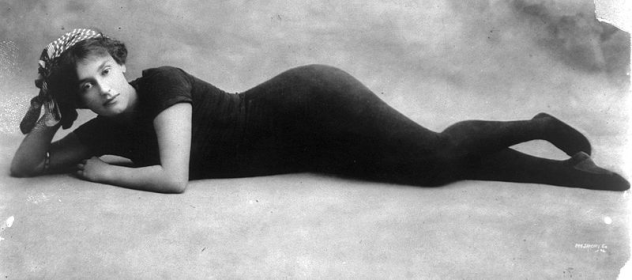
As a child, Annette Kellerman took up swimming as a means to cope with a degenerative muscle disorder. By the time the disease subsided, Kellerman had become so adept at the sport that she went on to become a famous swimmer and diver in her native Australia. As an actress, she earned renown for her films of aquatic adventure. Today Kellerman is remembered as the first movie star to appear nude on camera.
Known in Australia as “The Diving Venus,” Kellerman came to the world’s attention when she became the first woman ever to attempt a swim across the English Channel (a feat she never achieved, despite three tries). In 1907, she was famously arrested at a Boston beach for wearing a one-piece bathing suit. In the early 1900s, women’s bathing suits were cumbersome, floppy affairs—more like gowns by today’s standards. Kellerman dared to wear a sleek and formfitting bodysuit, and thanks largely to the publicity surrounding her arrest, “Annette Kellermans” (as the swimsuits were called) became popular and eventually socially acceptable. Naturally, Kellerman herself began selling the garments to the public.
The movie in which Kellerman appears nude is called A Daughter of the Gods (1916). Unfortunately, no copies of the film exist, though stills of Kellerman in the role can still be seen. The film could depict nudity because it appeared prior to the adoption of the so-called Hays Code. A set of censorship guidelines, the Code forbade cinematic depictions of nudity, in addition to such things as drug use, miscegenation, and “white slavery.”
Like many silent film stars, Kellerman was unable to make the transition to sound films, known as “talkies.” Upon leaving the movies, she opened a health food store in Long Beach, California. She also lectured on health and fitness in addition to writing books. Her book for children is called Fairy Tales of the South Seas. A vibrant personality to the end, she died in 1975 at age 89.
9 Sessue Hayakawa
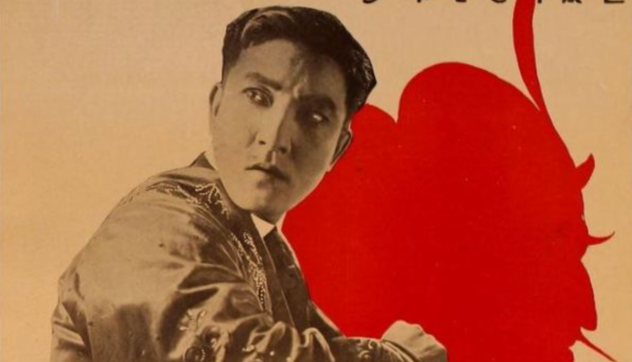
Sessue Hayakawa was the first Asian actor to become a matinee idol. In fact, at one time he was reportedly the highest-paid actor in movies, able to command equal billing with the likes of Charlie Chaplin and William S. Hart.
The son of an aristocratic line in his native Chiba, Japan, Hayakawa was being groomed by his family for a naval career. That prospect ended, however, when Hayakawa foolishly dove to the bottom of a lagoon one day on a schoolmate’s dare. He promptly ruptured his eardrum, thus disqualifying himself from service. Ashamed at his family’s disappointment (and especially that of his father, a provincial governor), Hayakawa attempted hara-kiri, the form of suicide whereby one falls on one’s sword or dagger. He was saved when his dog alerted servants to the ruckus.
After healing the rift with his family, Hayakawa enrolled in the University of Chicago in 1912, majoring in political economy. Despite the racism he encountered, and despite weighing only 60 kilograms (132 lb), he was able to secure a spot on the school’s football team. He used judo to bring down larger opponents, and as Asian martial arts were little known in the West back then, he claimed that this led people to believe he possessed “occult power.”
Eventually, Hayakawa made his way to Los Angeles where he became involved with a playhouse in the Little Tokyo neighborhood. One of their productions, The Typhoon, impressed a local producer and was turned into a film featuring the original cast. The film was a success, and the roles that followed cemented Hayakawa’s movie-star status. He drove a gold-plated Pierre-Arrow and was renowned for throwing lavish parties at his 32-room LA mansion.
The advent of talkies proved detrimental to Hayakawa’s career. After spending much of the ’30s and ’40s living in France, he managed a comeback with 1949’s Tokyo Joe, starring opposite Humphrey Bogart. Some three decades after his initial heyday, his performance in The Bridge on the River Kwai (1957) earned him an Oscar nomination.
8 William Haines
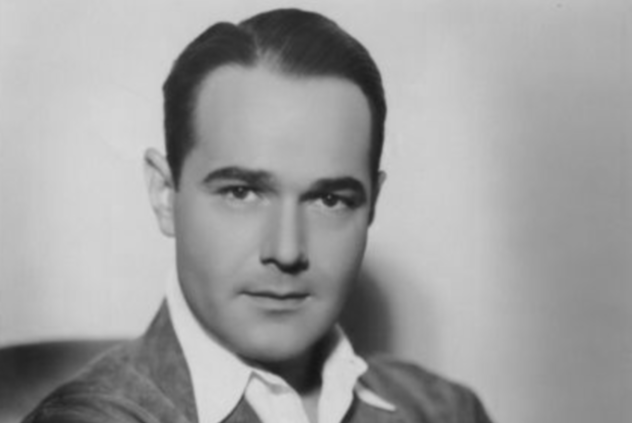
In the 1920s, William Haines (known to his friends as “Billy”) was one of MGM’s most bankable leading men. Understandably, then, studio boss Louis B. Mayer was more than a little worried when Haines was arrested one night in a YMCA, accused of performing lewd acts with a sailor he’d picked up earlier in the day. The studio managed to prevent the incident from being publicized, yet for Mayer, it was the last straw. Mayer had previously urged Haines to tamp down rumors of his homosexuality by entering into a sham marriage to a woman. In an age before gay rights, these were known as “lavender marriages.” Haines refused, since not only was he open about his sexual orientation (as much as one could be in those days, anyway), he was also in a committed relationship with a man named James Shields. Following the YMCA incident, Haines’s contract was summarily terminated.
Together with Shields, Haines managed to quietly rebuild his life as a successful interior decorator. The William Haines design company is still in existence today. Unfortunately, homophobia again disrupted their lives when one day in 1936, a neighbor accused Shields of molesting his young son. Haines and Shields soon found themselves confronted by a local mob outside their Manhattan Beach, California home. At the time, the area surrounding Manhattan Beach was a hotbed for racist activity, and it’s likely that the mob was a white supremacist group. Whatever the case, Haines and Shields were savagely beaten outside their front door. The child abuse accusation against Shields was highly dubious, but sadly the couple never saw justice, as the men who assaulted them were never charged.
Shortly after Haines’s death from cancer in 1973, Shields committed suicide. He left a note citing a broken heart.
7 Florence Lawrence
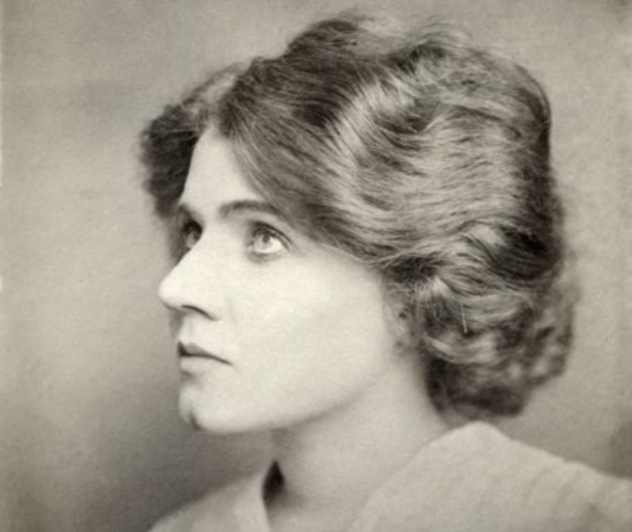
The name Florence Lawrence may be little recognized today, but historians know her as “The First Movie Star.” In the early days of cinema, on-screen talent went unbilled, as producers feared that an actor’s name on the marquee would lead to fame, which in turn would lead to demands for higher salaries. Celebrity, however, proved an unstoppable force. Audiences inevitably settled on their favorites, and foremost among them was Lawrence. The lovely Canadian-American girl with the dimpled chin was celebrated the world over as simply “The Biograph Girl,” after the name of the studio that released her movies.
In 1908, Lawrence and her husband, fellow actor Harry Solter, decamped Biograph and signed with Independent Moving Pictures. At last, Lawrence’s name was revealed, and she became the first screen star to benefit from a publicity campaign. In addition, her new studio boss concocted a bold stunt: He planted a story in the press saying that The Biograph Girl had been killed in a car crash, only to take out an ad a few weeks later showing pictures of the beloved star alive and well. Audiences were ecstatic to have their grief dispelled, and it was reported that overjoyed fans tore Lawrence’s clothes off in the street. That, however, was also a planted story.
Lawrence’s life behind the scenes was not an entirely happy one. In 1914, she sustained injuries from a fire on the set, and the resulting scars hobbled her career. Solter died in 1920, and a second marriage to a wealthy cosmetics salesman was dissolved after 10 years. “He told me that I did not keep myself as pretty as I used to,” she testified at the divorce hearing. Her third and final marriage, to a man who abused her, lasted only five months. Lawrence did attempt a comeback, but by the 1930s she was reduced to playing uncredited bit parts in talkies. The First Movie Star had become the first has-been.
On December 28, 1938, Lawrence, beset by incurable illness, committed suicide by ingesting arsenic-based ant paste . Her date of birth is uncertain; she was between 48 and 52 years old.
6 Maurice Costello
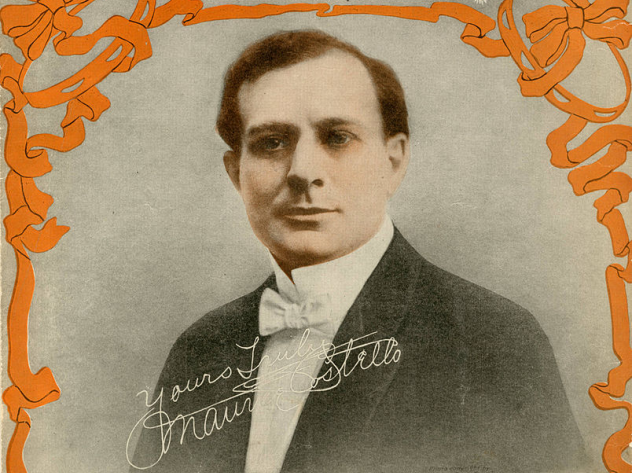
If Florence Lawrence was the first movie star, Maurice Costello was the first movie heartthrob. Employed for a time by Thomas Edison’s film studio, Costello, whose roots were Irish despite the Italian-sounding surname, was reputedly the first star to receive fan mail. Not knowing who he was, audiences wrote to him as simply “Dimples.”
Costello was also apparently the first movie star prima donna. According to the egalitarian ethos of early filmmaking, all members of the cast and crew, including actors, were expected to help with the building and painting of sets. Costello refused to follow this protocol, perhaps owing to the fact that he had been a successful actor in the theater. (Was this the reason trailers were brought onto sets?)
Whether through karmic retribution for his haughtiness, or simply bad luck, Costello fell on hard times later in life. In 1939, with his movie career having long faded, he sued his daughters Helene and Dolores for financial support. And while they were also successful actors, Helene, at least, was likely in no position to help, as she had her own well-publicized troubles. (We’ll get to her in a minute.) As a final note: Dolores was the wife of John Barrymore, which makes Maurice Costello the great grandfather of Drew Barrymore, with whom he shares a February 22nd birthday.
5 John Gilbert
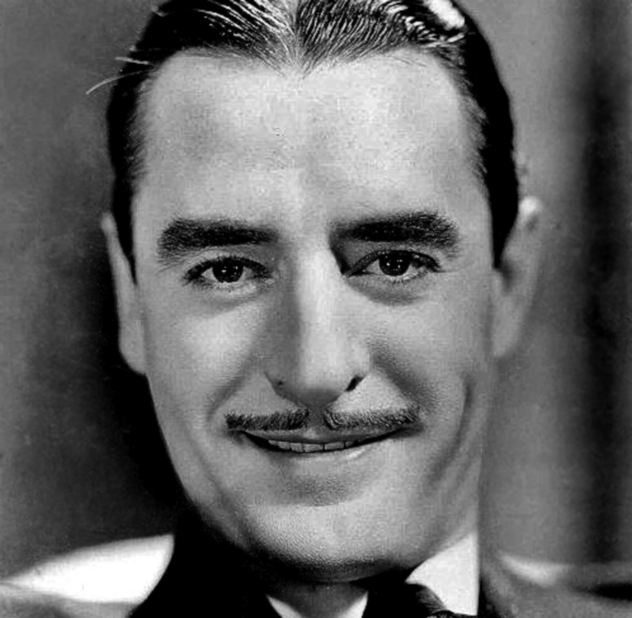
John Gilbert may not have been the biggest matinee idol of the silent era, but he was close. Female audiences especially couldn’t get enough of the smoldering hunk known as “The Great Lover.” Imagine the mass disappointment, then, when Gilbert was nabbed by the great screen goddess herself, Greta Garbo. Gilbert and Garbo were the reigning celebrity couple of their day, so passionately in love that, as co-stars, they would often continue with their love scenes even after the director yelled cut, much to the embarrassment of the cast and crew.
Some cite studio politics as the reason for Gilbert’s rapid decline in popularity during the talkie era, though others insist that audiences simply hated his voice. While Garbo’s Swedish accent and throaty contralto only added to her mystique, Gilbert’s voice was deemed too high, too prim. What’s worse, Garbo grew increasingly aloof in their relationship, and legend has it that their romance ended when Garbo failed to show for their planned wedding. Some, however, insist that the story of Garbo leaving Gilbert at the altar is a fabrication. The world will perhaps never know the truth, since Gilbert, who long struggled with alcoholism, died of a heart attack in 1936, and Garbo abandoned public life in the early ’40s, never so much as granting a single interview.
4 Helene Costello
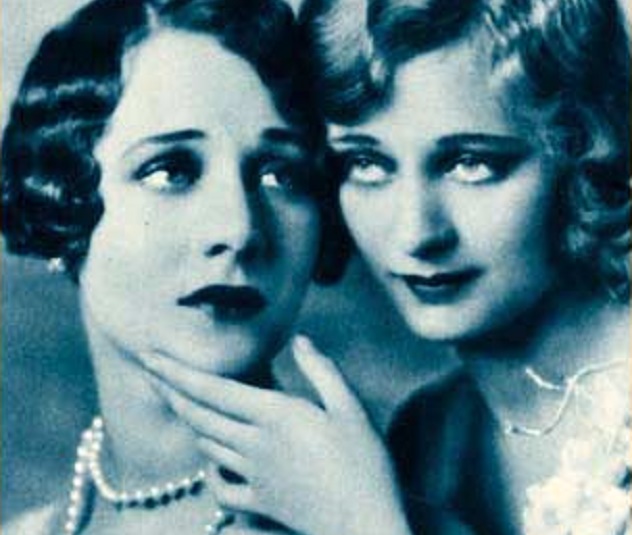
Helene Costello (left in the picture above) was an early example of a familiar Hollywood figure: a celebrity kid who just can’t make good. As children, Costello and her sister Dolores (right in the picture above) sometimes made appearances in films starring their father, Maurice Costello. As adults, both Costello sisters managed to become silent screen stars in their own right, although unfortunately Helene couldn’t make the transition to talkies, since despite her great beauty, her voice was deemed inadequate.
Costello was married and divorced four times by age 40. During the trial for her second divorce, one paper reported that Costello’s husband, in addition to accusing her of alcoholism, “presented a dozen expensively bound ‘snappy’ books to discredit his wife’s literary tastes.” Costello’s fourth marriage ended in a well-publicized custody battle, which she had to drop out of due to financial difficulties. The years of hardship seem to have exacerbated Costello’s personal troubles. At age 50, she entered a mental hospital for treatment of addiction. She died two days later, apparently of pneumonia. It was reported that less than a dozen people attended her funeral.
Since Maurice Costello is Drew Barrymore’s great grandfather, Helene is Drew’s grand-aunt. Happily, the formerly-troubled Drew managed to get her act together unlike her famous relative.
3 Art Acord
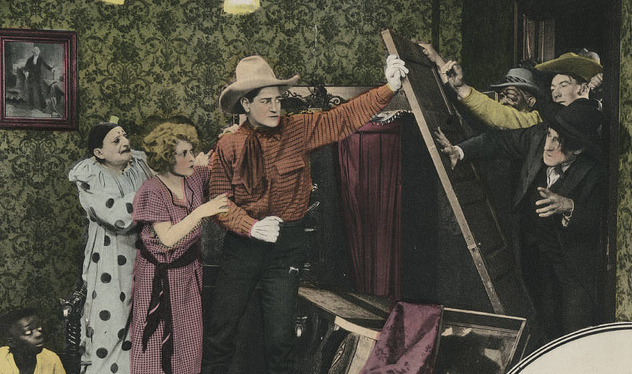
Art (Short for Arthur? Nope: Arthemus!) Acord was one of Hollywood’s original cowboy icons, starring in over 100 Westerns during the silent era. He was born in 1890 in either Oklahoma or Utah, during the waning days of the Old West. Prior to becoming a film star, Acord was a stage performer and champion steer wrestler. He had once worked with Buffalo Bill Cody. Although a gentle man while sober, Acord was a notoriously pugilistic drunk. He and his good friend Hoot Gibson, another big screen cowboy, would often come to blows for no apparent reason, only to make up once the liquor wore off. When the US entered World War I, Accord left to fight overseas and was awarded the prestigious Croix de Guerre for bravery.
Despite his strapping physique, Acord had a high voice, which meant that he was no good for talkies. Having gone through three marriages, he left Hollywood in the late 1920s to take his cowboy act on the road in Mexico. When money ran out, he worked as a miner. A longtime alcoholic and sufferer of depression, Acord poisoned himself with arsenic in 1931 at age 40.
2 Lupe Velez
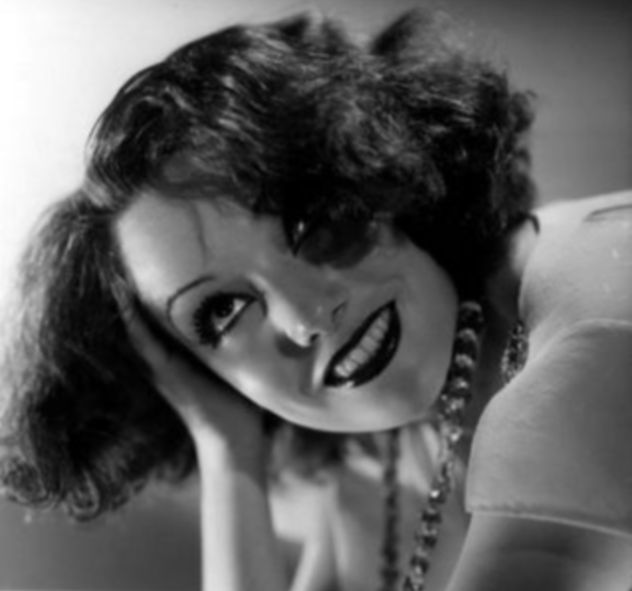
Lupe Velez was one of the first Latina actresses to attain a high profile in the movies, often cast in roles that played up her image as a “Mexican spitfire.” Her father was said to have been a Mexican army general, her mother an opera singer. Those stories, however, were likely studio fabrications. No matter—Lupe Velez didn’t need an interesting back story to become one of the most vivacious and captivating personalities of her time.
Today, of course, we are taught to be wary of the “fiery Latina” stereotype. Even so, there’s no denying that Velez was a person of strong passions: She loved to love and loved to fight. Several of her conquests were among the biggest male stars of the day. Errol Flynn described how, before making love, she went about praying to the Catholic icons bedecking her bedroom. Velez’s biographer retorts that, “Flynn’s storytelling and embellishment of the truth was legendary.” Gary Cooper was said to be on the verge of asking for her hand in marriage, though he broke off the relationship at the behest of his disapproving mother. Furious, Velez shot at Cooper as he was boarding a train. It is unclear whether she meant to hit him. Velez did marry Johnny Weissmuller, best known as the original Tarzan, who ended his first marriage to be with her. It is said that as Weissmuller was getting into his loincloth costume, the makeup crew had to mask scratches and various love bites on his torso.
Velez is one of only a few big names that were able to successfully make the transition to talkies. Even so, she met a sad end. After divorcing Weismuller, she had a relationship with the actor Harold Raymond, and was devastated when he refused to marry her after she’d become pregnant. Velez committed suicide in 1944 at age 36.
1 Theda Bara
Born Theodosia Goodman, Theda Bara’s stage name was said to be an anagram for “Arab Death.” As a teenager in Cincinnati, she had developed a taste for the occult (today she might be considered “goth”), and so appropriately she became famous as Hollywood’s first “vamp” icon, a femme fatale figure who sucks the life out of her hapless male lovers. In her heyday, Bara was unquestionably one of the biggest stars in the movies. One deaf-mute institute in New York voted her “the most expressive actress.” Bara is famous for uttering the (often misquoted) line, “Kiss me, my fool.”
Unfortunately for Bara, the vamp persona, stretched out over dozens of performances, soon devolved into gimmick. In order to feed the public’s fascination with their young starlet, the studio planted wild stories in the press—about her proclivities, her ethnicity, her place of birth (said to be under the shadow of the Sphinx in Egypt). She was forced to wear a veil in public, and interviews were conducted in a dark, incense-filled room. Finally fed up with the typecasting, Bara tried her hand at the theatre. The result was a disaster, as the press lambasted her performance. Bara failed to make the transition to talkies. In later life, she became famous for her dinner parties.
Most of Bara’s films have been lost, including Cleopatra, her most successful effort. However, a few seconds of Bara in that role can still be seen. The footage is haunting, showing the star in full vamp mode, gyrating before the camera in a costume that might be considered risque even by today’s standards (skip to 0:44 in the video above to see for yourself).
Ed Barreras bides his time in Long Beach, California.
